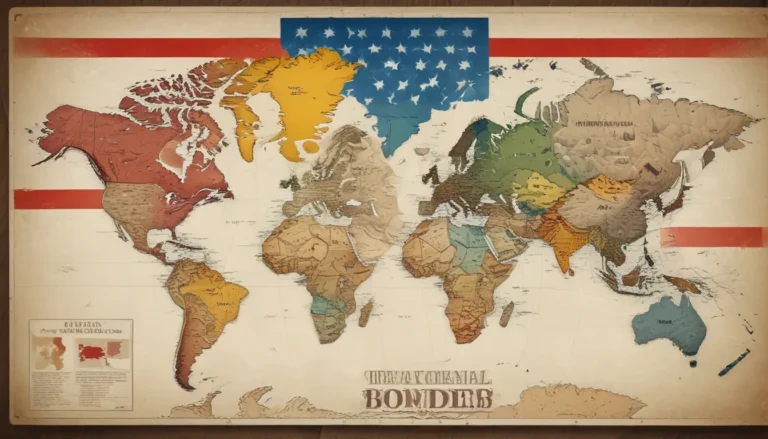A Note About Images: The images used in our articles are for illustration purposes only and may not exactly match the content. They are meant to engage readers, but the text should be relied upon for accurate information.
Flash floods are natural disasters that strike with a ferocious force, causing destruction and loss of life in their wake. These rapid and unpredictable phenomena can wreak havoc on communities, sweeping away everything in their path. In this informative guide, we will delve into the enigmatic world of flash floods, exploring 15 fascinating facts that highlight their destructive power and complexity. From their sudden onset to the massive debris they carry, these facts will provide a deeper understanding of these deadly natural disasters.
The Intriguing World of Flash Floods
Flash floods are not your everyday floods – they are sudden, deadly, and capable of carrying massive amounts of debris. These powerful floods can occur in dry areas and urbanized regions, causing economic damage and disrupting transportation networks. Efficient warning systems and public awareness are essential in minimizing the impact of flash floods. Furthermore, climate change can exacerbate the frequency and intensity of these destructive natural disasters.
Understanding Flash Floods
Flash floods are rapid and powerful floods that occur suddenly, often within hours of intense rainfall or the collapse of a dam or levee. They are infamous for their destructive force and can strike in any region, particularly in mountainous or urban areas.
Unlike regular floods that develop over time, flash floods materialize rapidly, leaving little to no time for preparation or evacuation. This suddenness contributes to their overall danger, making them the deadliest type of flooding globally.
Unraveling The Power of Flash Floods
The sheer force of flash floods is evident in the massive amounts of debris they can carry. Swift and powerful currents can transport objects like cars, trees, and even buildings, posing a significant risk to anyone in their path. This debris can cause extensive damage to structures and infrastructure, magnifying the impact of these catastrophic events.
The Impact of Flash Floods on Communities
Flash floods can cause significant economic damage, extending beyond the loss of life. The destruction of infrastructure, including roads, bridges, and buildings, can have a profound impact on local economies and communities. Additionally, the force of flash floodwaters can result in soil erosion, leading to instability and further damage in affected areas.
Flash Flood Characteristics and Causes
Flash floods can occur in arid regions as well as urban areas, where the alteration of natural drainage systems amplifies the risk. Unique topographies like canyons and narrow valleys provide an ideal environment for flash floods, with limited space for water to disperse, leading to intense flooding in a short amount of time.
These devastating floods can be triggered by heavy rainfall upstream, accumulating water that rapidly flows downstream, causing flash flooding in lower-lying areas. This can disrupt transportation networks, damaging and washing away vital links that can isolate communities and impede emergency response efforts.
Preparedness and Mitigation Strategies
Efficient warning systems and public awareness campaigns play a crucial role in mitigating the impact of flash floods. Early alerts allow individuals to take necessary precautions and evacuate to safer areas, reducing the potential for loss of life. With climate change expected to increase the frequency and intensity of rainfall events, adapting to these changes and implementing effective mitigation strategies is essential.
Conclusion: Navigating the Mysteries of Flash Floods
Flash floods are awe-inspiring natural phenomena that demand respect and preparedness. By understanding the enigmatic facts surrounding flash floods, we can better appreciate the forces of nature and work towards minimizing their destructive effects. From their sudden formation to their immense power, flash floods serve as a reminder of the importance of staying informed, having emergency plans in place, and heeding warnings and advisories.
As we continue to study and learn more about flash floods, taking action to protect ourselves and our communities is paramount. Stay informed, be prepared, and prioritize safety to navigate the mysteries of flash floods with resilience and caution.
FAQs: Addressing Common Concerns
Q: What causes flash floods?
A: Flash floods are primarily caused by heavy rainfall, exceeding the soil’s absorption capacity, along with factors like dam failures and rapid snowmelt.
Q: How quickly can a flash flood develop?
A: Flash floods can develop within minutes or hours, posing a serious danger in low-lying areas and narrow canyons.
Q: Can flash floods be predicted in advance?
A: While meteorologists can forecast heavy rainfall and potential flood conditions, predicting the exact occurrence of a flash flood remains challenging.
Trust in our commitment to quality and authenticity as you learn more about the intriguing world of flash floods. Stay informed, stay safe, and be prepared to tackle the challenges posed by these powerful natural disasters.






